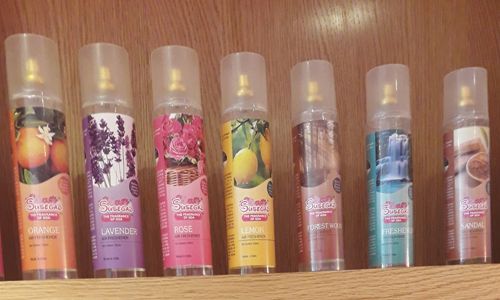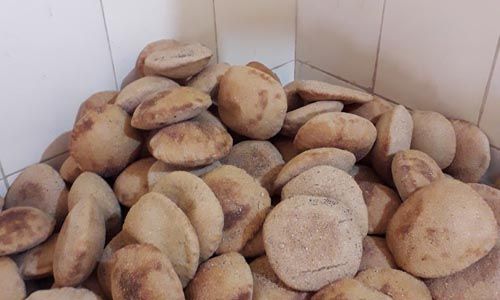It is understood that once an alcohol is in a bottle, the character will never change. This is because the high alcohol concentration forbids any change to occur within the liquid.That means if feni was bottled in say the '70s, it would taste the same today. But connoisseurs differ. Or, is it just that '70s quality of feni is just not replicated today?
April 14, 2013
What if feni became aged
Hansel Vaz
Why should whisky or a brandy be aged in an oak cask and not a feni, is a question that needs to be asked. Goans have been consuming feni for a few centuries now, yet much of the feni is not aged. Aged feni is rare, primarily because it seems unlikely that someone would store feni without consuming it first. For the most part therefore, aged feni is usually available at a personal capacity(***level) -the elixir to be served to close friends and family. What is intriguing is that, unlike aged whisky and brandy that take on a beautiful amber hue, even the oldest feni is as clear as spring water, although it has been known to take on a pale golden hue.
This is because feni is aged in large glass carboys called garrafaos or in steel vessels instead of wooden casks. While bottlers prefer steel vessels because of their high volume storage and output of production, some barmen still store their feni in garrafaos, as the logistics and cost of using oak casks to age feni make it prohibitively expensive. Therefore, why not stick to the time tested glass then? Also, by not using oak (which is difficult to obtain) it would allow feni to retain its robust character to the fullest.
Message in the bottle
Following conventional alcohol wisdom, why would someone store feni in garrafaos if common knowledge is that feni did not age when stored in glass? It is widely understood that once an alcohol is in a bottle, the character (under proper storage conditions) will never change. This is because the high alcohol concentration forbids any change to occur within the liquid.That means if feni was bottled in say the '70s, it would taste the same today. But connoisseurs beg to differ. Can this be explained only by psychology? Or, is it just that '70s quality of feni is just not replicated today?
Little wonder then that one hears stories of glass bottles filled with feni being found at the bottom of wells or buried in soil in the courtyard. The high alcohol content may work against it, but if you look at it with a bit of common sense, it is clear that something just must happen inside after the bottle has been sealed. It would be naive to believe that all of the hundreds of chemical substances present in feni that give it its unique bouquet of taste, would become totally inert right after bottling. There has to be a chemical interaction that we do not fully understand yet, that somehow makes aged feni smoother and rounds of its rough edges. After all if age can smoothen out the rougher aspects of humans and even some animals, why not with feni? To me it's crystal clear; our ancestors recognized the fact that feni did change over time in glass, only we won't admit it. That's the message in the bottle!
Feni is like finery in the making
The process of crafting a feni is in many ways very similar to that of making wine. You hand pick tree-ripened cashews, stomp the juicy apples and allow the juice to ferment into a crude cashew wine. But that's probably where the similarity ends. In the following step - distillation, the low-strength wine is converted into high strength alcoholic spirit, that we could call urrack, cazulo or feni, depending on which stage you are at.
Feni distillation is often simplified as a process of separating the alcohol from the rest of the wine -meaning alcohol evaporates faster than water in the wash. But in fact, when the wash is brought to a boil, a lot of complex interactions take place between the many components inside the bhann (copper pot), and alcohol evaporation is only one of them.
If you have ever tasted fermented cashew wash; it has a rather musty tang to it, notes which are not entirely pleasant to taste. However, compared to the wash, feni has distinctive flavours and taste that has so much appeal practically impossible to detect in the wash. This is how it evolves.
 The metabolism of the naturally present wild yeast is an enormously complex process - converting natural sugars into a mixture of different alcohols and organic acids. With the addition of heat during distillation, these mixtures of different alcohols and organic acids recombine to form chemical compounds called esters. The aromas in feni are tied to esters. Different kinds of alcohol and different acids give rise to different esters - consequently widening the flavour profile of the drink. Naturally, a little water also gets vaporized when heat is applied, and it is on these water vapours that esters piggy back on to be transported and then condensed into the launi (distillate collection pot). By redistilling the first distillate, urrack with fresh juice, we only are trying to concentrate more esters - sending more flavour into feni. After all isn't taste tied very closely to smell?
The metabolism of the naturally present wild yeast is an enormously complex process - converting natural sugars into a mixture of different alcohols and organic acids. With the addition of heat during distillation, these mixtures of different alcohols and organic acids recombine to form chemical compounds called esters. The aromas in feni are tied to esters. Different kinds of alcohol and different acids give rise to different esters - consequently widening the flavour profile of the drink. Naturally, a little water also gets vaporized when heat is applied, and it is on these water vapours that esters piggy back on to be transported and then condensed into the launi (distillate collection pot). By redistilling the first distillate, urrack with fresh juice, we only are trying to concentrate more esters - sending more flavour into feni. After all isn't taste tied very closely to smell?
Those unpleasant musty aromas of the wash are caused by sulphur which is naturally present in any organic material. Excess of sulphur in the juice needs removal in the distillation, as it is a one way ticket to hang over city. And this is essentially the reason why pot stills are made from copper: The sulphur reacts with the copper walls of the pot still to form an insoluble copper sulphate that is green in colour. With the ester formation and sulphur removed, the distillate is now the robust feni that we all enjoy during our summer evenings.
Because of the highly complex chemistry of such a rich mixture of substances it is difficult to understand with absolute certainty what actually goes on inside a copper pot still during distillation. Maybe we will never know, but we can truly appreciate the distinctness of a fine feni bouquet.
A task underfoot
Trampling underfoot baskets of squishy cashews may sound like fun, but it requires skill, balance and endurance to collect the buckets of sweet cashew juice. The juice from the stomped cashews is then diluted with water; called a wash.
Traditionally huge earthen pots - kodem, buried in the ground, are employed as a vessel to ferment the wash. The wash can hardly be viewed just as fruit juice diluted in water; at this point it is a complex concoction of sugars, starches, fats, alcohols, acids and proteins. By encouraging the use of only naturally occurring tropical yeasts strains, the wash begins to ferment; constantly bubbling and spluttering in the 3-4 days that nature takes over. Fermentation is not simply a conversion of glucose into ethanol, with carbondioxide as an exhaust gas. The metabolism of the wild yeast is enormously complex, converting natural sugars into a live broth of different alcohols and organic acids - crucial for the aromatic evolution, when distillation of the ferment takes place. Left alone for a few days, nature takes over inside the kodem from where man left off.
By the end, when the sugars are all consumed, the wash is now a cashew wine -with a thick layer of scum floating on the surface. The bubbling stops as the sugars have by now, been all consumed by the insatiable wild yeast. The cashew wine not only looks putrid, but if you have, like me, sacrificed life for science -the wine is musty-tangy, and not entirely pleasant. Those unpleasant musty aromas of the wash are caused by sulphur which is naturally present in any organic material. Excess of sulphur in the juice needs removal in the distillation, as it is a one-way ticket to hang over the city.
In the bustle to process the baskets of cashew apples every evening, the highly complex chemistry and the reactions taking place, is seldom understood and is a forgotten stage in the feni crafting process. Shrouded in the sheath that covers the mouth of the kodem we can only guess what actually really happens.
It is a sole-baring experience, which you get only in Goa - to stomp cashews, that is. During the harvest, cashew Feni distilleries stretching from Pernem to Polem and Valpoi to Velsao still make Feni the time-honoured way - daily squishing tonnes of cashew apples between their toes. In fact, cashew feni purists, believe that feni distilled from juice that has been stomped, is by far the best. It is however also believed that juice extraction by the foot may soon cease to exist and be taken over entirely by mechanical pulpers and the hydraulic press. The trick is not to shred the fruit, rather to gently squeeze it open so the juices are expressed without releasing the acidic sap that is undesirable. But even though they may have the latest in gleaming cashew press technology -Pinjre, parked at their Colmbi- stomping pit; a number of distilleries still practice the retro charm of stomping cashews in fast-changing Goa.
(Geology proved to be rather aberrant from his real passion. Struggling to choose the more sensible option; Hansel Vaz now juggles his time bottling fine feni and studying rocks in Papua New Guinea).



